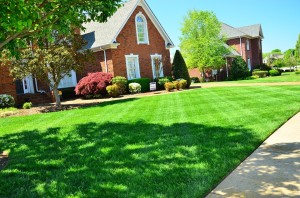Latest Posts
- Have a purpose when backyardingAugust 5 2021
- Study: Time outside alters our microbiomeAugust 4 2021
- Happy National Mutt Day from Mo-MoJuly 27 2021
- New home? Avoid these common mistakes in your yard.July 26 2021
- Infographic: Plan a backyard staycation this summerJuly 22 2021
Categories
Archive
June 19th
Tips for maximizing the living landscapes at your (new) home

It’s home buying season! If you’re moving into a new home this summer – or if you just want to get a fresh start on your living landscapes, TurfMutt is here to help.
Here are his top tips for getting backyard ready and making the most of your outdoor living room.
Assess the Existing Living Landscapes
Take a look at what currently exists in your yard to determine what you love about it and what you’d like to change. If you’re doing this at a new home, don’t be afraid to ask the previous owner about the plantings. They might be able to provide a list of landscape items to make your job easier.
Plan for Outdoor Living
Determine what will work with the existing living landscape for your entire family – including your kids and pets. Take into account your family needs and lifestyle. Then, research options for enhancing your family yard with hardy turfgrass, climate-appropriate plants and a mix of adaptive and native plants to foster biodiversity. Plant to preserve your corner of the ecosystem with a good mix of grass, trees, shrubs and flowering plants to support our pollinator friends: birds, bees and butterflies. Remember, nature starts at your backdoor!
Plant with Your Pets in Mind
If you have a turfgrass lawn, you’ve got a playground for pets and kids. However, you should know there are many types of grasses – and some are better than others for pets, especially dogs. Also, if your yard has artificial or synthetic grass, you’ll want to replace it with real turf. Plastic grass is bad for the environment, hard to keep clean, and can get too hot for pet paws and little feet. Finally, avoid toxic plants that can be harmful to pets (see the ASPCA’s list of toxic and non-toxic plants for tips).
Remember: Right Plant, Right Place
When you’re ready to dig in and plant in your family yard, remember the “Golden Rule” of living landscapes: put the right plant in the right place. Select plants that will thrive in your climate zone. The microclimate in your new neighborhood may be very different from the one you just moved from – even if you didn’t relocate a great distance. Familiarize yourself with your plant hardiness zone on the USDA Plant Hardiness Zone Map to determine what types of turf, trees, shrubs and plants will thrive in your new location.
Learn About Restrictions & Rules
Some neighborhoods with home owners associations (HOAs) have restrictions about what you can and cannot plant in your yard. Other communities may have watering limitations during part of the year requiring a smart irrigation system. Become familiar with the rules so you can plan accordingly.
Conduct an Outdoor Power Equipment Inventory
The power equipment you needed at your previous home may not suffice at the new property, or perhaps it’s time to upgrade your equipment to better suit your needs. Take an inventory of your existing outdoor power equipment (lawnmower, leaf blower, etc.) and match it against the needs of your new family yard. At the very least, now’s also a good time to get your outdoor power equipment serviced for the upcoming season.
Want to learn more about the benefits of your living landscapes? Visit SaveLivingLandscapes.com.





